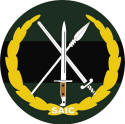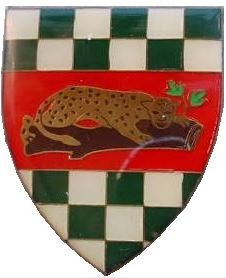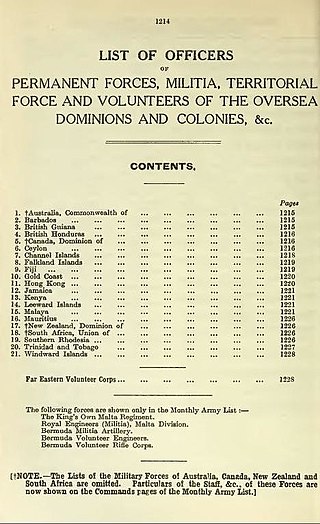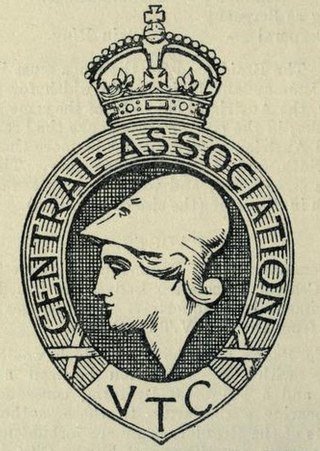
The 21 Special Air Service Regiment (Artists) (Reserve), historically known as The Artists Rifles is a regiment of the Army Reserve. Its name is abbreviated to 21 SAS(R).

The South African Army Infantry Formation supervises all infantry within the South African Army.

A rifleman is an infantry soldier armed with a rifled long gun. Although the rifleman role had its origin with 16th century hand cannoneers and 17th century musketeers, the term originated in the 18th century with the introduction of the rifled musket. By the mid-19th century, entire regiments of riflemen were formed and became the mainstay of all standard infantry, and rifleman became a generic term for any common infantryman.

Andrew Mlangeni Regiment is a reserve infantry regiment of the South African Army.

The Chief Langalibalele Rifles is a reserve infantry regiment of the South African Army.

The Buffalo Volunteer Rifles (BVR) is an infantry regiment of the South African Army. As a reserve unit, it has a status roughly equivalent to that of a British Army Reserve or United States Army National Guard unit.

The General Jan Smuts Regiment is a reserve mechanised infantry regiment of the South African Army.

The Nelson Mandela Artillery Regiment is a reserve artillery regiment of the South African Army and part of the South African Army Artillery Formation.

A Scottish regiment is any regiment that at some time in its history has or had a name that referred to Scotland or some part thereof, and adopted items of Scottish dress. These regiments were created after the Acts of Union in 1707 between England and Scotland, either directly serving Britain during its various wars, or as part of the military establishments of Commonwealth countries. Their "Scottishness" is no longer necessarily due to recruitment in Scotland nor any proportion of members of Scottish ancestry.
South Africa has a number of Traditional Regiments. These are mostly South African Army Reserve Force regiments that were established either under previous colonial governments or by the Apartheid regime and which have continued to exist by accepting the authority of the government-of-the-day - be it colonial, union, Apartheid, or fully democratic.
The Cape Colonial Forces (CCF) were the official defence organisation of the Cape Colony in South Africa. Established in 1855, they were taken over by the Union of South Africa in 1910, and disbanded when the Union Defence Forces were formed in 1912.

The London Irish Rifles (LIR) was a reserve infantry regiment and then company of the British Army. The unit's final incarnation was as D Company, the London Regiment. On 1 April 2022 soldiers in the company transferred to foot guards regiments and the company became No 15 (Loos) Company, Irish Guards.

The Royal South Australia Regiment is a reserve regiment of the Australian Army consisting of a single battalion, the 10th/27th Battalion, part of the 9th Brigade. It was raised on 1 July 1960, as The South Australia Regiment.
The Irish military diaspora refers to the many people of either Irish birth or extraction who have served in overseas military forces, regardless of rank, duration of service, or success.

The Chief Makhanda Regiment is a reserve air assault infantry regiment of the South African Army.

The British Colonial Auxiliary Forces were the various military forces of Britain's colonial empire which were not considered part of the British military proper.
Irish Rifles may refer to:

The Volunteer Training Corps was a voluntary home defence reserve force in the United Kingdom during World War I.

Artillery Memorial, Cape Town was erected in memory of the gunners who fought for South Africa during World War I. The memorial, which forms part of the Delville Wood Memorial, is located in the Company's Garden, Cape Town, and was strategically established to commemorate South Africa's artillery soldiers who fell in battle. Of those who volunteered to fight during the war, 5800 were white South African, amongst whom 15% were Dutch and 85% English. An estimated 2536 of these men were killed in the Deville Wood battle in Europe. The Artillery Memorial, an authentic cannon facing east towards the National Gallery, proudly honors South Africa's heavy artillerymen. Inscribed on it are the names of the officers, N.C.O.'s and men of the South African artillery who fell in the Great War (1914–1918).














